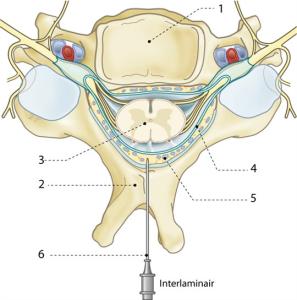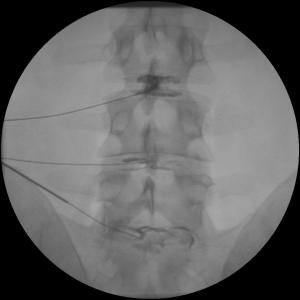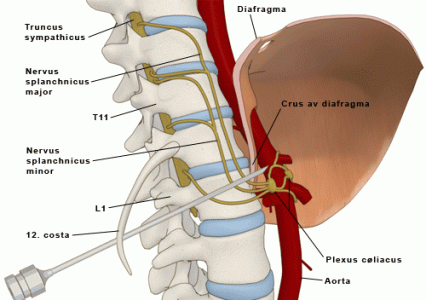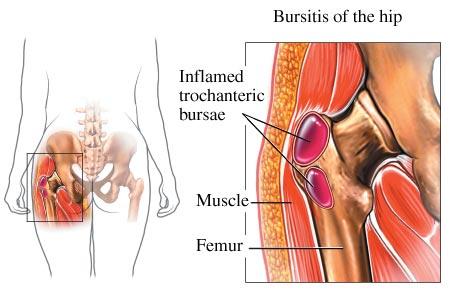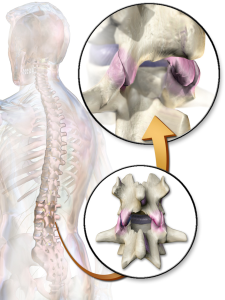What is a stellate ganglion block?
A stellate ganglion block is an injection of local anesthetic in the sympathetic nerve tissue of the neck. These nerves are a part of the sympathetic nervous system. The nerves are located on either side of the voice box, in the neck.
What is the purpose of a stellate ganglion block?
A stellate ganglion block blocks the sympathetic nerves that go to the arms, and, to some degree, the sympathetic nerves that go to the face. This may in turn reduce pain, swelling, color and sweating changes in the upper extremity and may improve mobility. It is done as a part of the treatment of Reflex Sympathetic Dystrophy (RSD), Sympathetic Maintained Pain, Complex Regional Pain Syndrome and Herpes Zoster (shingles) involving an arm or the head and face.
How long does the stellate ganglion block take?
The actual injection takes only a few minutes.
What is actually injected?
The injection consists of a local anesthetic. Epinephrine or steroid medication may be added to prolong the effects of the stellate ganglion block.
Will the stellate ganglion block hurt?
The stellate ganglion block involves inserting a needle through skin and deeper tissues. So, there is some pain involved. However, we may numb the skin and deeper tissues with a local anesthetic using a very thin needle before inserting the actual block needle. Most of the patients also receive intravenous sedation, which can make the procedure easier to tolerate.
Will I be "put out' for the stellate ganglion block?
Maybe. The stellate ganglion block can be done under local anesthesia only. However, most of the patients also receive enough intravenous sedation that they may fall asleep for a few minutes during the actual injection. Patients breathe on their own throughout the procedure. The amount of sedation given generally depends upon the patient tolerance, but can often be enough that the patient has amnesia for the actual injection.
How is the stellate ganglion block performed?
It is done either with the patient slightly sitting up. The chin is slightly raised and turned away from the side to be injected. The patients are monitored with EKG, blood pressure cuff and an oxygen-monitoring device. Temperature sensing probes are also placed on your hands. The skin in the front of the neck, next to the "voice box" is cleaned with antiseptic solution and then the injection is carried out.
What should I expect after the stellate ganglion block?
Immediately after the injection, you may feel your arm getting warm. In addition, you may notice that your pain may be gone or quite less. You may also notice "a lump in the throat" as well as hoarse voice, a droopy and red eye and some nasal congestion on the side of the injection. You may rarely also develop a headache.
What should I do after the stellate ganglion block?
You should have a ride home. We advise patients to take it easy for a day or so after the procedure. You can perform the activities that you can reasonably tolerate. Some patients may go for immediate physical therapy.
Can I go to work to work the next day?
Unless there are complications, you should be able to return to work the next day. The most common thing you may feel is soreness in the neck at the injection site.
How long the effect of the medication last?
The local anesthetic wears off in a few hours. However, the blockade of sympathetic nerves may last for many more hours. Usually, the duration of relief gets longer after each injection.
How many stellate ganglion blocks do I need to have?
If you respond to the first injection, you will be recommended for repeat injections. Usually, a series of such injections is needed to treat the problem. Some may need only 2 to 4 and some may need more than 10. The response to such injections varies from patient to patient.
Will the stellate ganglion block help me?
It is sometimes difficult to predict if the injection will indeed help you or not. The patients who present early during their illness tend to respond better than those who have had symptoms for a very long time. Patients in advanced stages of disease may not respond adequately.
What are the risks and side effects?
This procedure is safe. However, with any procedure there are risks, side effects and possibility of complications. The most common side effect is temporary pain at the injection site. Other less common risks include bleeding, infection, spinal block, epidural block and injection into blood vessels and surrounding organs. Fortunately, serious side effects and complications are uncommon.
Who should not have a stellate ganglion block?
If the patient is allergic to any of the medications to be injected, on a blood thinning medication, has an active infection going on near the injection site, or has poorly controlled diabetes or heart disease, they should not have the injection or at least consider postponing it if postponing it would improve your overall medical condition.




